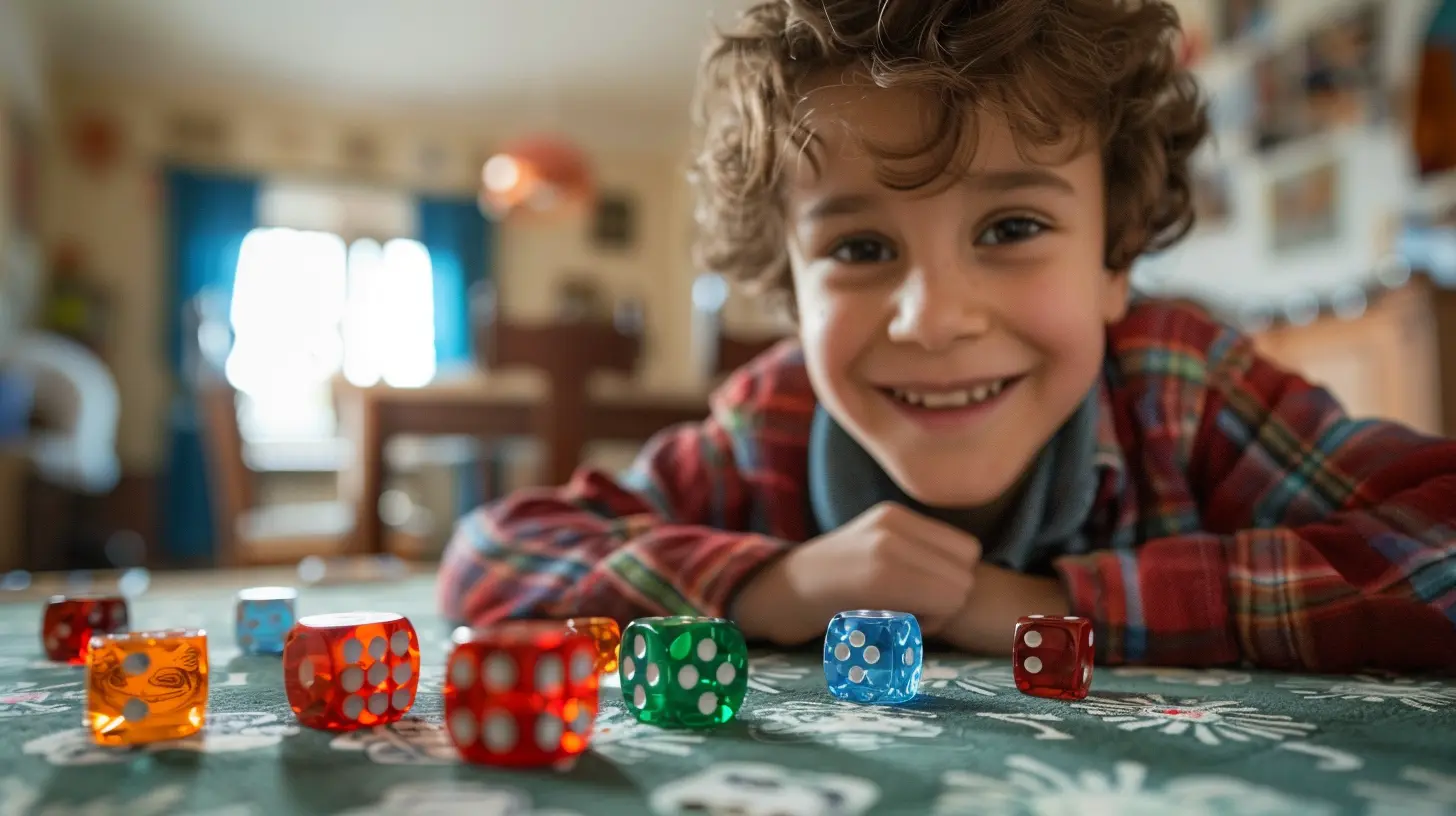The Importance of Rule-Based Play in Childhood Development
20 November 2025
Let’s take a walk down memory lane. Remember those long summer afternoons spent playing hide-and-seek or making up your own board game with your siblings? Or those epic playground matches of tag, where the only thing that mattered was that everyone agreed on who was “it”? Whether you knew it or not, you were doing a lot more than just having fun — you were shaping your brain, developing social skills, and getting a crash course in life. All thanks to something called rule-based play.
And no, we’re not just talking about boring adult rules or strict classroom codes. We’re talking about the kind that actually makes play more exciting. You know — the rules that say, “you can only take three steps,” or “you can’t cross this line,” or “if you touch the tree, you’re safe.”
So, what’s the deal with rule-based play? Why is it such a big deal in childhood development? Pour yourself a cup of something cozy, and let's dive into the wonderfully structured (but still super fun) world of rules and play.
What Exactly Is Rule-Based Play?
Before we go full detective mode on why this is so important, let’s clear up what rule-based play even is.Rule-based play is any kind of game or activity that operates under a set of agreed-upon rules. Think card games, board games, sports like soccer or hopscotch, and even video games. Basically, if “cheating” is possible, congratulations — you’re likely in a rule-based game.
Sure, free play — the kind where kids just run wild and make up stories as they go — is also super valuable. But rule-based play brings a unique set of benefits that other types of play just don’t pack. It’s like the spinach in your playtime salad (only it actually tastes like candy).
Why Rules Rock: Cognitive Perks Galore
1. Flexing That Brain Muscle
Ever seen a four-year-old try to wrap their head around “Uno”? It might be chaotic at first (okay, very chaotic), but give it time, and you'll see real mental gymnastics at play.Rules force kids to think strategically, pay attention, and remember instructions. They have to plan ahead, anticipate outcomes, and problem-solve when something doesn’t go as planned.
That’s not just play — that’s executive functioning development in action. These are the same brain skills they'll need later in life for stuff like doing homework, handling multitasking at a job, and yes…even driving.
> Think of it like a mental gym session, but instead of doing crunches, their brains are doing “if-then” thinking reps.
2. Learning to Delay Gratification
In rule-based play, you don’t always get what you want. Sometimes you lose a turn. Sometimes someone beats you. Sometimes the dice just hate you.And that’s okay.
These little disappointments are golden opportunities. They teach self-control, patience, and how to deal with setbacks. Kids learn that there’s a bigger picture — that sticking to the rules and playing fair is more important than winning every single time.
That’s some seriously grown-up wisdom served with a side of fun.
The Social Side: Playing Nicely with Others
3. Building Social Smarts
If there were a playground MVP trophy, it’d go to the kid who knows how to follow rules and cooperate. Rule-based play is like a mini bootcamp for social skills.Think about it:
- Players must take turns.
- They have to negotiate and agree on the rules.
- They need to listen to others.
- And they learn to argue (nicely!) when someone bends the rules.
These are foundational tools for navigating friendships, resolving conflicts, and being a team player.
> It’s like the world’s most fun group project... without the awkward PowerPoint presentation.
4. Empathy and Perspective-Taking
You can’t be the center of the universe in a rule-based game. (Well, unless you make the game about that… looking at you, Monopoly.) You have to think about others — what they know, what they want, and how your actions affect them.That’s how empathy is born.
Rule-based games help kids see the world from someone else’s point of view — a key ingredient in emotional intelligence.
Emotional Wins: Feel All the Feels (And Learn From Them)
5. Confidence Through Mastery
There’s something magical about finally “getting” a game. The moment a child understands how to play and starts doing it well, it’s like fireworks go off internally.This is confidence at its purest.
They feel capable. They feel smart. And the best part? It motivates them to try more challenges.
That confidence ripples into other areas of life — like trying a new subject in school or making a new friend.
6. Safe Space for Emotional Expression
Let’s be real — games can bring out BIG feelings. Joy, frustration, anger, excitement — they all bubble to the surface. And that’s a great thing.Rule-based play gives kids a safe space to feel those emotions and learn how to manage them. They learn not to lash out when they lose or gloat when they win. They learn how to shake hands and say “good game.”
Basically, they become emotionally stronger — all while having a blast.
Physical Development: Yep, Even Rules Help Here
7. Coordination and Motor Skills
Many rule-based games involve movement — catching, running, jumping, throwing. And every time a kid participates in these activities, they’re fine-tuning their motor skills.Games like “Simon Says” or “Red Light, Green Light” are perfect examples. They require physical control plus mental focus. Double win.
Even when games are more stationary — like puzzles or board games — there’s still finger dexterity and hand-eye coordination involved.
So yes, rules can be good for the body too.
Digital Play Counts Too (With a Few Caveats)
8. Yes, Video Games Can Help
Let’s not pretend kids in 2024 are only playing stickball in the backyard. Digital games are a huge part of childhood now — and guess what? Many of them are rule-based.From Minecraft’s survival mode to the strict turn-taking of strategy games like Pokémon, video games teach similar levels of problem-solving, thinking ahead, and respecting constraints.
Just keep it balanced. Too much screen time can hit pause on other types of development, so variety is still the key.
Creating Your Own Rule-Based Games at Home
Don’t worry if you’re not ready to dive into chess or complex RPGs with your kiddo. You can start simple! Here are a few easy peasy ideas:- Treasure Hunt: Make a simple map and create rules about how to find the prize.
- Obstacle Course: “You have to hop to the couch, crawl under the table, and balance a stuffed animal on your head.”
- Board Game Night: Pick age-appropriate games and play regularly.
- DIY Card Games: Create new rules together — this adds creativity to the mix too.
The point isn’t just to fill time — it’s to fill that growing brain with opportunities to learn, stretch, and connect.
The Role of Adults: Cheerleaders, Not Coaches
Your job as a grown-up? Be the guide on the side, not the drill sergeant.Let kids take the lead. Encourage them to come up with rules. Support fair play but don’t step in every time there’s a disagreement. Let them work through it. That’s all part of the learning.
And most of all — join in! Your presence turns play into bonding time and makes the experience richer for everyone involved.
Wrapping Up: More Than Just Play
So, next time your kids are arguing about who’s playing by the rules, smile — because even that little disagreement is doing big things for their development.Rule-based play is so much more than just passing time. It’s brain-boosting, emotion-balancing, team-building magic. And the rules? They’re not a limitation — they’re the structure that helps kids grow up smarter, kinder, and more connected.
So go ahead — roll the dice, deal the cards, or shout “you’re it!” Just remember that behind every silly game is a seriously powerful learning experience.
all images in this post were generated using AI tools
Category:
Games For KidsAuthor:

Emery Larsen

